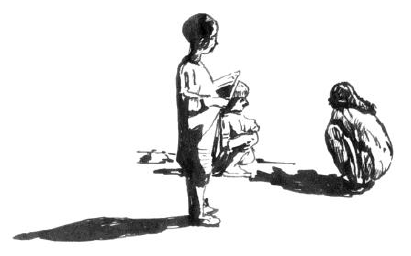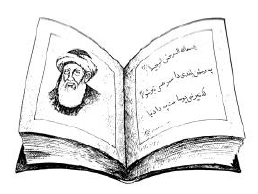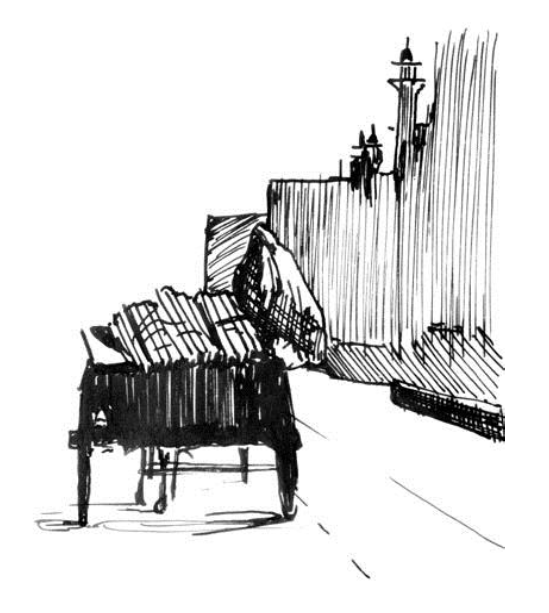Lesson Two
To listen to the audio, click a phrase/word. To download, hold down 'd' and click.
L: pu khayr raaghle! Welcome! (Lit. You came in peace!) | په خیر راغلې |
H: khUdáay de oobakhkha May you live in peace! | خُدائ دې وبخښه |
L: tsínga ye? sihút de khu day? How are you? Is your health good? | څنګه يې؟ صحت دې ښهٔ دے؟ |
H: khu yim, tu tsínga ye? I'm fine. How are you? | ښهٔ یم. ته څنګه یې؟ |
L: du khUdáay fúzul day, khu yim. zmáa noom jaan day. staa noom tsu day? By the grace of God, I'm well. My name is John. What is your name? | د خُدائ فضل دے، شهٔ یم. زما نُوم جان دے. ستا نُوم څهٔ دے؟ |
H: zmaa noom imdáad day. My name is Imdad. | زما نُوم امداد دے. |
L: tu du kum zaay ye? (or) tu du kum zaay na raaghulay ye? Where are you from? | تهٔ د کُوم ځائ يې؟ (یا) تهٔ د کُوم ځائ نه راغلے یې؟ |
H: zu du mardáan yim. (or) zu du mardáan na raaghulay yim. I'm from Mardan. | زهٔ د مردان یم. (یا) زهٔ د مردان نه راغلے یم. |
L: zu du landún yim. I'm from London. | زهٔ د لندن یم. |
NOTE:
Names are not usually exchanged until the initial conversation is almost finished.
Pronunciation Drill
Contrasting ټ - T with ډ - D
zu Taal larúm زهٔ ټال لرم. zu Daal larúm زهٔ ډال لرم. Tol shta. ټول شته. Dol shta. ډول شته. hálta Tak sho. هلته ټک شو. daa Duk sho. دا ډک شو daa taal day. دا تال دے. daa Taal day. دا ټال دے. Contrasting ا - aa with a (may not have a character in script form)
daa khaar day. دا ښار دے. daa khar day. دا خر دے. hagha ghaar day. هغه غار دے. hagha ghar day. هغه غر دے.

Demonstrative Prouns: “this” and “that”
| daa | this | دا |
| dágha | that (nearby objects) | دغه |
| hágha | that (distant objects) | هغه |
“this” and “that” with masculine nouns and adjectives
| Pronoun | Adjective | Noun | Verb | ||
|---|---|---|---|---|---|
daa | lunD | pinsúl | day | This is a short pencil. دا لنډ پِنسل دے. | |
daa | óogud | qalúm | day | This is a long pen. دا اُوږد قلم دے. | |
dágha | droond | mez | day | That is a heavy table. دغه درُوند مېز دے. | |
dágha | spuk | kitáab | day | This is a light book. دغه سپک کتاب دے. | |
hágha | tor | war | day | This is a black door هغه تور ور دے. | |
hágha | speen | kaghúz | day | This is a white paper هغه سپین کاغذ دے. | |
| Pronoun | Noun | Adjective | Verb | ||
|---|---|---|---|---|---|
daa | halúk | khu | day | This boy is good. دا هلک ښهٔ دے. | |
daa | kitáab | kharáab | day | This book is bad. دا کتاب خراب دے. | |
dágha | balákht | sheen | day | This pillow is green. دغه بالخت شین دے. | |
hágha | spay | ghaT | day | That male dog is big. هغه سپے غټ دے. | |
hágha | saRáy | waRóokay | day | That man is small. هغه سړے وړوکے دے. | |
👆 Have the teacher point to objects that are close and far away, substituting nouns already introduced. Don’t introduce new vocabulary. Use the question دا څه شے دے؟ - daa tsu shay day? (What is this?) to elicit new vocabulary.
NOTES:

- Demonstrative pronouns do not change in form for plural nouns.
- دا - daa is used for an object in the hand, or within easy reach.
- شین - sheen can mean either 'green' or 'blue'.
Subject pronouns with masculine adjectives
| Pronoun | Adjective | Verb | ||
|---|---|---|---|---|
zu | stúRay | yim. | I am tired. زهٔ ستړے یم. | |
hágha | khhÚlay | day. | He is handsome هغه ښکُلے دے. | |
tu | joR | ye? | Are you well? تهٔ جوړ یې؟ | |
hágha | ghaT | day. | That/he is big. هغه عټ دے. | |
hágha | naráy | day. | He is thin. هغه نرے دے. | |
daa | droond | day. | This is heavy. دا دروند دے. | |
NOTE:
When two consecutive adjectives are used, او - aaw (and) is inserted between the two adjectives. For example:
| daa ghaT aaw droond mez day. | This is a large and heavy table. | دا غټ او درُوند مېز دے. |
| hágha moTúr tor aaw speen day. | That car is black and white. | هغه موټر تور او سپین دے. |
Questions and Answers
| tu stúRay ye? | Are you tired? | تۀ ستړے يې؟ |
| na, Der stúRay nu yim. | No, I'm not very tired. | نه، ډېر ستړے نۀ يم. |
| daa ghaT kitáab day? | Is this a big book? | دا غټ کتاب دے؟ |
| aaw, daa ghaT kitáab day. | Yes, this is a big book. | آو، دا غټ کتاب دے. |
| tu túgay ye? | Are you (m.) thirsty? | تۀ تږے يې؟ |
| aaw, zu Der túgay yim. | Yes, I (m.) am very thirsty. | آو، زۀ ډېر تږے يم. |
| hágha moTúr kum rang day? | What colour is that car? | هغه موټر کُوم رنګ دے؟ |
| hágha speen aaw soor day. | It's white and red. | هغه سپين او سُور دے. |
| dágha mez dróond day? | Is this table heavy? | دغه مېز درُوند دے؟ |
| na, dágha mez droond nu day, spuk day. | No this table is not heavy, it's light. | نه، دغه مېز درُوند نۀ دے، سپک دے. |
Questions and answers with: “what?” and “how?”
| dágha tsu shay day? | What is that? | دغه څۀ شے دے؟ |
| dágha qalúm day. | It's a pen. | دغه قلم دے. |
| daa qalúm tsínga day? | How is this pen? | دا قلم څنګه دے؟ |
| daa khu qalúm day. | It is a good pen. | دا ښۀ قلم دے. |
| hágha tsu shay day? | What thing is that? | هغه څۀ شے دے؟ |
| hágha moTúr day. | That is a car. | هغه موټر دے. |
| hágha moTur tsunga day? | How is that car? | هغه موټر څنګه دے؟ |
| hágha moTur Der kharaab day. | That car is very bad. | هغه موټر ډېر خراب دے. |
Memorizing Moment
متلونه - matulóona
په هر چا خپل وطن کشمیر دے.
pu hăr chaa khpul watún kashmeer day.
For everyone his own country is Kashmir.
خپل عمل د لارې مل دے.
khpul amúl du láare mal day.
Your own deeds are with you on your path.
NOTE:
Be careful to listen to the pronunciation of place names like Kashmir. Many are quite different from the English way of saying them.
👆 Find out and use the Pukhto pronunciations of Peshawar, Nowshera, Swat and Pakistan, etc.
Exercises for Lesson Two
- Use the correct form of the equative in the following sentences.
dágha mez droond.
دغه مېز درُوند.
hágha moTur ghaT.
هغه موټر غټ.
tu Der stúRay.
تۀ ډېر ستړے.
daa qalúm tor nu.
دا قلم تور نۀ.
zu Der túgay nu.
زۀ ډېر تږے نۀ.
staa noom tsu?
ستا نُوم څهٔ؟
- Use the correct pronoun to complete the following sentences:
wúgay nu yim.
وږے نۀ يم.
khu saRáy ye.
ښۀ سړے يې.
tor kitáab nu day.
تور کتاب نۀ دے.
Der stúRay yim.
ډېر ستړے يم.
mez óogud day.
مېز اُوږد دے.
tsunga ye?
څنګه يې؟

Copyright © 2020 Sampson, Robert
All Rights Reserved. No part of this book may be used or reproduced in any manner whatsoever without written permission, except in the case of brief quotations.